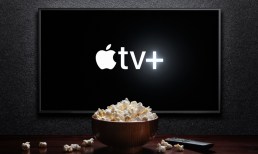UMB Spotlights The Supplier Payment User Experience

Banks continue to make moves in an effort to get their corporate clients off paper. Recent innovations in ACH payments has the payment rail as a new favorite choice for both buyers and suppliers, thanks to its speed and ability to transmit transaction data for easier reconciliation. Checks and wires remain common, however, then there are the cards, often seen as a tool that benefits payers more than payees.
In accounts payable (AP), it appears there is a competition between the payment rails, and a constant tug-and-pull between the needs of corporate payers and their vendors. Rather than look at the digitization of B2B payments, though, as a competition between payment rails, UMB Bank‘s SVP and Director of Product Management Uma Wilson said service providers must turn their attention to the end-user experience of payables to move the needle on electronic corporate payments.
It hasn’t always been that way, however.
“If you were to ask me five, six years ago, I would have never talked about user experience,” she said in a recent interview with PYMNTS. “It’s sort of the new Holy Grail. We cannot minimize the value of that.”
Over the same time period, Wilson said UMB has seen double-digit growth in commercial payments volume, forcing the financial institution (FI) to take a closer look at how to enhance its existing corporate payables offerings. The bank recently announced a partnership with U.K.-based corporate expense management and payments company Fraedom, a deal that will see UMB’s corporate clients migrate to the Fraedom platform with a suite of commercial card and expense management solutions.
To address the modern-day needs of corporate payers, Wilson said, UMB wasn’t focused so much on the commercial card as it was the customer experience of payment and reconciliation. The corporate payments market has experienced a vivacious effort to “consumerize,” meaning to provide corporate payers with a consumer-like experience. However, corporate payments are more complex, she said, involving multiple parts and players.
“It’s not just one-to-one,” she explained. “It could be your invoicing company, a third party cutting the check or someone posting the payment. It’s a multi-component model.”
Driving ease-of-use in such a dynamic payment model is not as straightforward in the consumer space, where providing 10-second peer-to-peer (P2P) transaction capability will meet customer needs. At the same time, like consumers, businesses don’t want a steep learning curve when adopting new tools. The need for less friction, faster transaction speeds and a digital platform through which businesses can manage their payments are the factors that led UMB to partner with Fraedom — it just so happens that these demands are met with a commercial card solution.
The collaboration will eventually include the development of a mobile app, another factor that Wilson said is key to enhancing the corporate payer experience, as professionals demand access to work functionality when they leave the office.
“In corporate America, people are not just eight-to-five. We’re seeing trends that they’re taking care of business needs after the eight-to-five model,” she explained. “Mobile is very critical.”
A mobile platform linked to a commercial card program is particularly effective for business travel and expense management needs, she noted, as the technology supports on-the-spot data capture and expense reporting. It’s a capability accessible to fewer than half of commercial card professionals recently surveyed by Capital One in a report, highlighting mobile commercial card solutions as a significant opportunity for the industry to boost the user experience.
In the AP department, though, commercial cards have a reputation for providing more benefits to the payers than the supplier payees. The obvious reason is the cost of commercial card acceptance, though proponents of commercial cards in the accounts payable department have said suppliers are able to be paid more quickly, negating the need for early payment discounts and making up for the added cost of card acceptance.
Again, Wilson emphasized that, regardless of payment rail, the user experience is key. That goes for vendors, too.
“I don’t want to minimize that customers don’t want to accept cards,” she said. “But I really believe if you can give them a convincing story, they would use cards.”
That story includes streamlined reconciliation, one of the largest hurdles for supplier card acceptance. While the collaboration with Fraedom focuses on the AP side of the transactions, Wilson emphasized the importance for any B2B payments program to be able to address the reconciliation needs of the vendor.
For financial service providers focusing on reconciliation for both buyers and suppliers, mobile support, greater speed, control of payment and other key points of friction that companies experience today with their legacy payment solutions will yield greater success in digitizing B2B payments. Taking on this strategy turns the conversation away from payment rails and toward user experience.
“It’s not about, ‘Do you want to use a card or check, or ACH?'” said Wilson. “It’s about, ‘I want to provide our customers a convincing reason why they should be using a frictionless payment, like a card payment, to drive and make payments from the payables perspective.”



